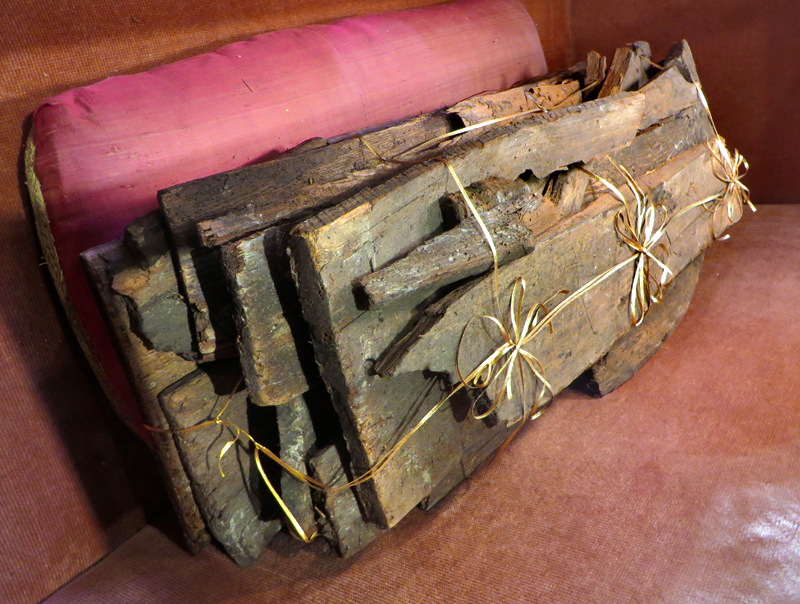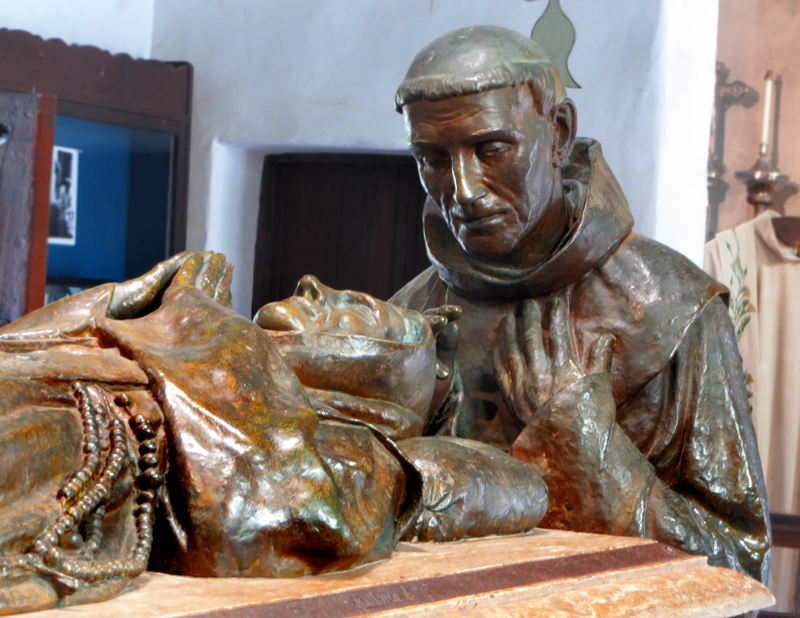|
|
[NEXT] [PREVIOUS] [CONTENTS] [SEARCH]
9. The Trail Blazer
|
Capt. Pedro Fages was the commanding officer of the Presidio of San Diego before heading to Monterey in 1770 to assume command as governor of Alta California. In that capacity he made made several expeditions into the hinterland, one of which brought him along the banks of the Santa Clara River. Several of his place names, such as Soledad and Agua Dulce, are still with us. A tall, aristocratic Spaniard in his early thirties, Fages was a lieutenant in charge of the twenty-five Catalonian soldiers during the Portolá march to Monterey. He was considered a trail blazer, possessed of an inquisitive mind and a definite wanderlust. He must have had mixed feelings that spring morning in 1772 when it was discovered that six of his soldados de cuero had deserted with an equal number of comely young Indian maidens. Fages was upset by the loss of his lancers, but he welcomed the excuse to go off exploring. An expeditionary force was quickly assembled. It headed east into the Imperial Valley. Sometimes following a trail left by the mutineers and sometimes following reports from Indians, Fages pressed on along the base of the towering San Gabriels, across the wide, reedy banks of the Mojave River, up into the Antelope Valley, then plunging into the Sierra Pelonas to emerge at the headwaters of the Rio Santa Clara. The party's first camp in this valley was probably made near Agua Dulce Springs, which Fages named for its supply of "sweet water." At the point where Castaic Creek joins the Santa Clara River, Fages was back on familiar ground. Three years earlier he had stood in this spot with Governor Portolá and Father Juan Crespí. Don Pedro renewed his acquaintance with the venerable kika, or chief, of the Tataviam community and was led to believe that the men he was looking for were somewhere up in Castaic Canyon. After resting men and animals for two days, the party mounted up and ascended the canyon, following the brook which was teeming with trout. They camped at Cienaga ("swamp"), where Fish Creek joins Castaic, then at Laguna (Lake Elizabeth), passed by the original Castaic Lake (across from modern Lebec), and stood at last on the crest of Tejon ("badger") Pass, which Fages had called "Cañada de las Uvas" for the wild grapes growing in the canyon. Gazing out over the vast expanses of the San Joaquin Valley, Pedro Fages made the notation "buena vista," or "beautiful view," in his journal. He never found the deserters, who probably hid out somewhere in the rocky vastness of the Tehachapi Mountains. One is tempted to compare them with Fletcher Christian and the refugees on Pitcairn Island, revolting against Captain Bligh, though this might be unfair to the indomitable Fages. Capt. Fages returned to San Diego after the epic trek and filed a detailed account of his pursuit, adding thousands of acres to previously blank maps. In 1777 he fought Apaches on the Sonoran frontier, returning as a lieutentant colonel to serve again as governor until 1791. Alternate accounts have him retiring to Mexico or returning to his estate in Seville, Spain.
©1998 SANTA CLARITA VALLEY HISTORICAL SOCIETY · RIGHTS RESERVED. |
Story: Rio Santa Clara in Costansó's Diary Perkins Manuscript: Colonization
Junípero Serra (1)
Junípero Serra (2)
Juan Crespí Story
Graves of Serra, Crespí, Lasuen
Serra's Coffin
Serra Cenotaph
Pedro Fages
Fages Marker
Francisco Garcés
Early Afro-Mexican Settlers (Video 2015)
|
The site owner makes no assertions as to ownership of any original copyrights to digitized images. However, these images are intended for Personal or Research use only. Any other kind of use, including but not limited to commercial or scholarly publication in any medium or format, public exhibition, or use online or in a web site, may be subject to additional restrictions including but not limited to the copyrights held by parties other than the site owner. USERS ARE SOLELY RESPONSIBLE for determining the existence of such rights and for obtaining any permissions and/or paying associated fees necessary for the proposed use.










